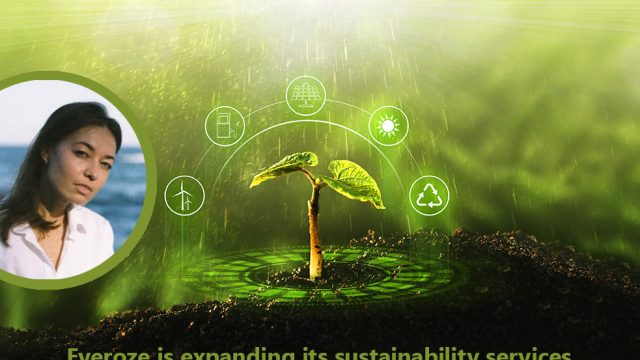Renewables: we need to talk about carbon emissions
Published in June 2024
Have renewable energy projects had it too easy? New requirements to measure carbon impacts reveal plenty of scope for improving the environmental impact of this essential infrastructure, as well as a mess of guidance in need of standardisation.
Offshore wind is good for the planet, right? Right. The 13.9 GW worth of turbines currently spinning in the breeze off UK shores attest to that. The 50 TWh of clean energy they pump into our electricity grid every year is energy that would, little more than a decade ago, have mostly been provided by burning coal and gas. So the news that the UK government would be offering extra payments to offshore wind and other low-carbon energy sources for being more sustainable might seem strange to those on the outside. Are we, as an industry, not already doing enough?
The Sustainable Industry Rewards (SiR), designed to incentivise investment in sustainable supply chains, are one of many signals that we are entering a period where renewables are king and fossil fuel generation is becoming largely obsolete. In this new landscape, renewables must face up to the fact that they, like all large-scale infrastructure, are responsible for substantial negative impacts on the environment. Thanks to a slew of new acronym-heavy regulations – including the CFRD, SFDR, and TCFD – many large organisations operating or investing in energy generation are now required to report on the environmental (and social and governance) impacts of all their activities for the first time. Some in the renewables industry might think this unnecessary – when you’re not burning hydrocarbons, who cares about the relatively tiny emissions from construction and decommissioning? At Everoze we agree with those who instead see this as an opportunity to understand the full spectrum of a project’s environmental impacts. Only then can you work to minimise the negative and maximise the positive.
But before getting started, you need a way to measure those impacts. Helpfully, there’s no shortage of methodologies, standards and approaches designed to do exactly this, for GHG emissions at least (other environmental impacts are harder to quantify). If anything there’s an overabundance, with a hundred different ways of answering what seems like the same question. We recommend starting by asking why exactly you are asking the question in the first place. Are you an asset manager required to report the carbon emissions associated with your portfolio? Or are you a developer looking to make your project as low-impact as possible? Could you even be a forward-thinking network operator looking for the lowest carbon option to stabilise the grid?
Each requires a different approach to carbon assessment. The asset manager will want to take the organisational footprinting approach, as usually defined by the GHG Protocol’s Corporate Standard. Here, we’re operating in the world of accounting and finance, with figures reported in financial years, and cropping up in company annual reports to shareholders. Our own internal carbon monitoring work takes exactly this approach.
For the developer, the bounds of the assessment are not a single year but the whole project lifecycle. The lifecycle assessment (LCA) approach, first developed for the packaging of consumer products, provides the template here. LCA techniques can be applied on a far larger scale to encompass an entire project, from steel production to the movements of O&M vessels to blade recycling and seabed reinstatement. With greater scale comes greater complexity; there is substantial room for divergence in methods, making project-level LCAs difficult to compare.
Finally, we have the strategic decision-making of the network operator. Here things get even more complex. To inform long-term decision-making involving multiple projects and complex system boundaries a bespoke approach is needed, one which in Everoze’s experience borrows equally heavily from financial modelling techniques as it does from GHG protocol guidance. Successfully navigating these challenges offers a route to using predicted carbon impacts to reliably inform decision-making.
However, one thing some of these approaches seem to forget is the very reason why renewables exist in the first place: they are clean in operation and displace fossil fuel generation which is not. But what about making that operational phase of life even more clean? Transmission grid constraints and geographical wind speed correlation mean a new wind farm off eastern Scotland is likely to offset less conventional generation from the grid than one located off England’s western coast. A similar logic can also be applied to solar generation.
So we applaud the initiatives of the SiR in pushing offshore wind developers to reduce the carbon impacts of their supply chains and to not get complacent with the fact that renewable generation is a hell of a lot better for the planet than what it is replacing. Because it can be much better still – and if we are to understand where to focus this effort, robust and well-designed carbon assessment methodologies (and ultimately full environmental impact methodologies) are what’s needed.






